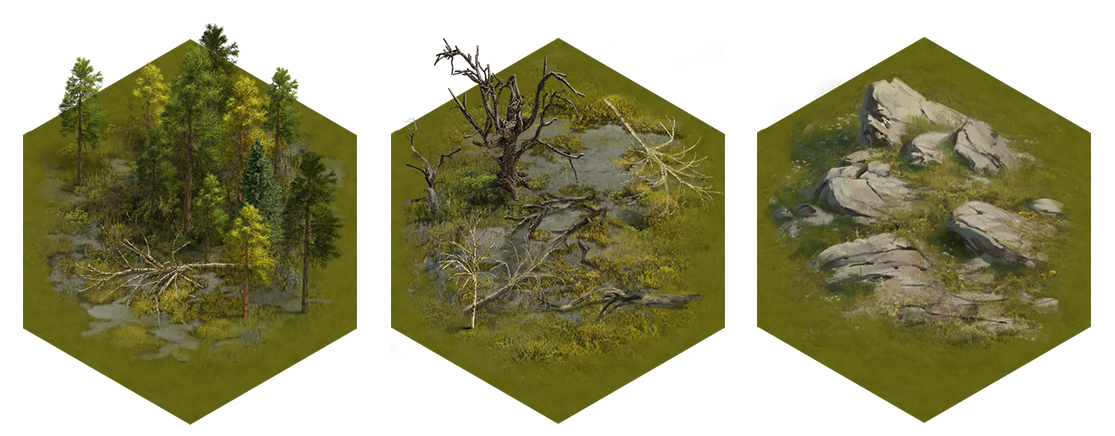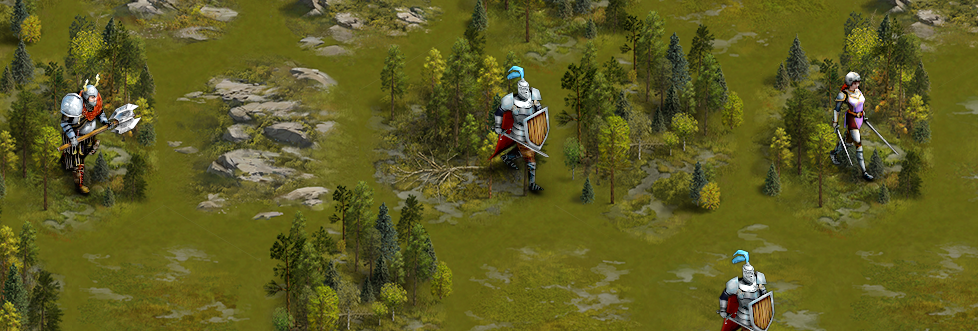
Marvel of design and technology: the birth of Legends of Honor’s interactive world map
At the beginning of January, we officially launched our new strategy title, Legends of Honor. Since that day, hundreds of thousands of castles have been built while battle-hungry and iron-willed heroes steal across the massive world map. We believe that this achievement fully deserves a blog post of its own, so today we’d like to give you a look at the exciting creation of the world map. We also met with game designer Christoph, client developer Gregory, and concept artist Sven and asked them to share some exciting behind-the-scenes details.
Back when Legends of Honor was in the very first stages of development, when not a line of code nor a pixel had been created, the first ideas for a new online strategy game began to crystallize: this game should stand out because of its extremely active and dynamic gameplay. This idea manifested as a world map that allowed the players’ heroes to move about freely and defeat enemies.
This was no easy task, however. Although the team behind Legends of Honor has years of experience in the strategy genre, they had never created such a complex world map before and so didn’t have any specific experience to fall back on. Ambitious and focused on their goal, the 60 skilled game designers, programmers, project managers, and designers on the Legends of Honor team combined all their talents to master this challenge.
First, the game designers worked with the product managers to build some concrete content from the initial ideas, describe the subsequent game mechanics, and carefully imagine possible game scenarios. What should the world map look like? How should players move across it and face each other in tactical battles?

“It was especially important to us to ensure that the gameplay on the world map felt as dynamic and intuitive as possible – the players should navigate their heroes on it, like in a command center,” commented game designer Christoph.
The programmers then took the game designers’ descriptions and developed a prototype of the world map. In order to fully bring to life the correct depiction and movement of the heroes, the map was separated into small, hexagonal tiles. Each of these tiles has its own coordinates and is therefore unique. Via a click of the mouse, the software is able to recognize that the player’s hero has received an order to move from position A to position B. An algorithm calculates distance, time, and the route that the hero must take. This information starts the animation, and the hero begins to move – regardless of whether they’re headed to the next battle or just exploring.

The programmers also wrote the code as a flexible “component system” so that attributes can be managed and assigned independent of units and other elements in the game. In this way, client developer Gregory and his colleagues can easily adapt new properties, such as range of sight and speed of movement, and integrate new content.
The artists also worked hard to make sure that the world map and the heroes on it look good, too. Concept artist Sven remembers: “Each visual element and tile had to be designed in such a way that altogether they created a magnificent world map with a diverse landscape. We therefore constructed countless variations of forest, grass, and rock tiles, which an algorithm then put together to create the world map.”

One trick here: instead of only designing the surfaces of the hexagons, the artists also created trees and mountains rising above. This makes the tiles appear to interlock in a visually appealing way and without any noticeable overlap, ultimately giving the world map the appearance of an epic landscape. The heroes must be easy to see and appear powerful, so their scale is deliberately larger and their color contrasts well with the world map.

The content created by the game designers, artists, and developers ultimately brought the world map to life. To ensure that the world map works perfectly and is also fun, it was tested by players at an early stage and improved using their feedback. For example, one result of these tests led to a function that makes it easier and faster to send heroes to distant attacks.
And that’s not all: since the team behind Legends of Honor is full of new ideas, they are already tinkering with new and exciting content that will continue to expand the world map. There’s lots to look forward to!
Read more about the development of Legends of Honor and our Strategy Games Studio.


